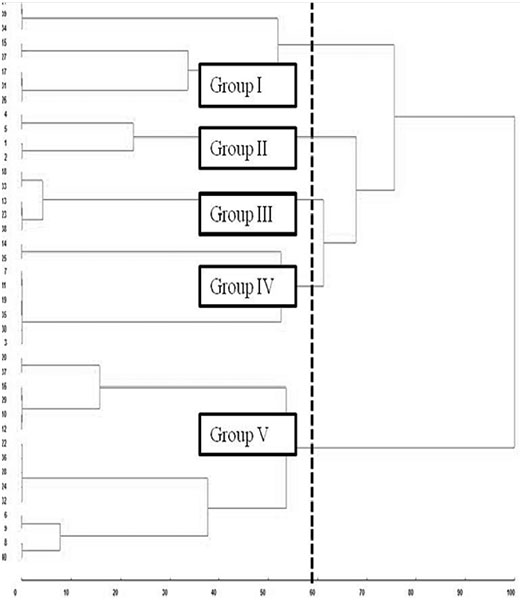The existence of variability is a prerequisite for genetic improvement in plants. Globe artichoke is a high nutritious vegetable with medical value, representing a profitable alternative for rural producers. This research was conducted with the aim of evaluating the phenotypic variability in a commercial cultivar of artichoke (Cynara cardunculus var. scolymus L) established from seeds. Field plants were assessed when primary head reached commercial stage. An amount of 21 quantitative and 5 multicategoric characters were assessed. The quantitative data were submitted to multivariate analysis. For quantitative characters the distance between individuals varied from 3.0 to 50.9, revealing high intrapopulation variability. The greater relative contribution characters for genetic divergence were the primary head fresh mass (79.88%) and bottom fresh mass (8.43%). This indicates the possibility of plant selection for head quality in this population. The clustering analysis through UPGMA method, based on quantitative characters, allowed the formation of five groups. For multicategoric traits, the similarity among individuals varied from 1.22% to 100%. Within the existing population variability, it was possible to select plants with superior quantitative traits desirable for in natura consumption, as primary head fresh weight and length, bottom fresh mass, bract basis length and width, as well as non-quantitative traits as round head shape, absence of thorn and presence of violet color in the head.
Cynara cardunculus var. scolymus L; multivariated analysis; genetic breeding.



